When building a PC, choosing the correct motherboard is crucial, as it serves as the foundation that connects all the other parts of your computer. The form factor, which refers to size and dimension, is one of the most important factors when selecting a motherboard.[1] This article will explore the significance of choosing the correct and available motherboard form factors.
Key Takeaways
- Choosing the correct motherboard form factor is essential for your PC as it is a foundation that connects all other components.
- The common motherboard form factors are Mini ITX, MicroATX, ATX, and E-ATX. ATX is the most common one and is widely used in various applications.
- Mini ATX is recommended for compact PCs; Micro-ATX and ATX are suitable if you want more expansion options. Lastly, E-ATX is ideal if you are building a high-end workstation.
Importance of Choosing The Right Form Factor
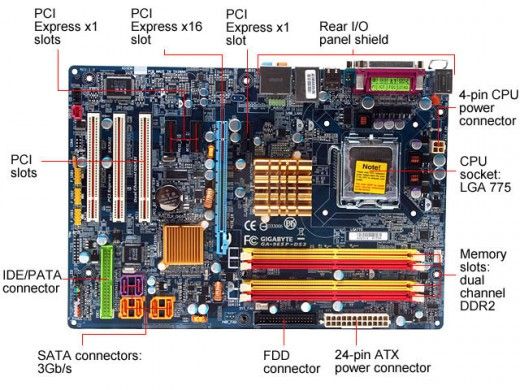
Choosing the correct form factor is crucial since it directly affects the size and shape of your motherboard. This factor, in turn, determines what kind of case your motherboard can fit into.[2] Additionally, the form factor impacts the number and type of expansion slots available on the motherboard, including PCIe and RAM slots. Moreover, selecting the correct form factor ensures compatibility with other components and provides the necessary features for your PC build.
Types of Motherboard Form Factors
Several motherboard form factors are available, but we will focus on the most common ones: Mini ITX, MicroATX, ATX, and E-ATX.
Mini ITX
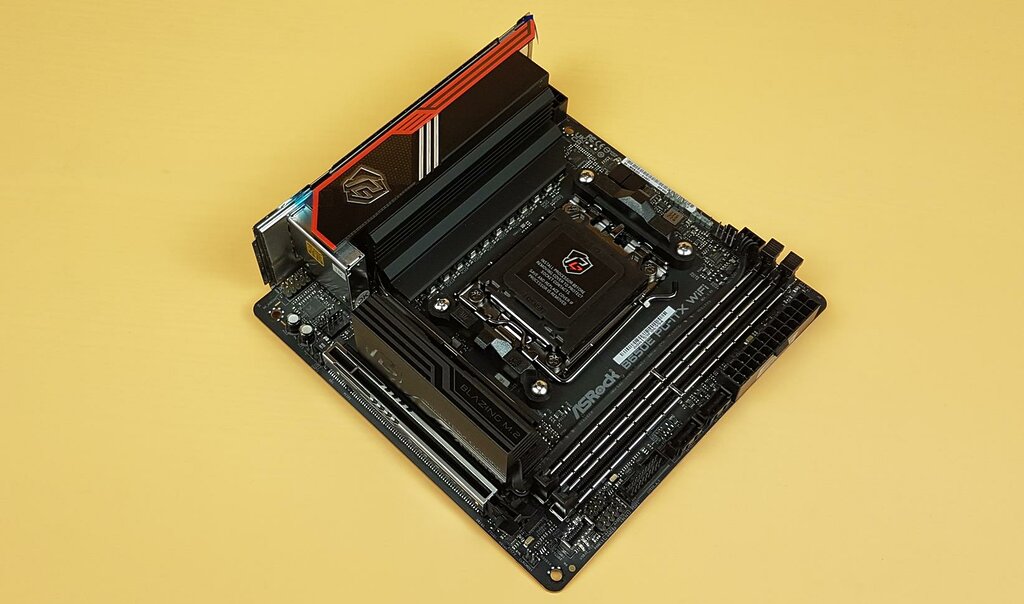
Mini ITX is the smallest form factor, measuring 6.7” x 6.7” or 170mm x 170mm. It is an excellent choice for small form factor builds, such as home theatre PCs or compact gaming rigs.[3] Due to its small size, it has limited expansion options, typically only one PCIe slot[4] and two RAM slots. However, it is a cost-effective option for those looking to build a compact PC, but it may not be suitable for more demanding applications.
| Advantages | Disadvantages |
|---|---|
| Smallest motherboard form factor, making it ideal for compact builds. | Limited expansion slots, limiting the potential for upgrades. |
| Lower power consumption due to the smaller size and fewer components. | Limited memory slots limit the amount of memory that can be installed. |
| They can be quite portable, making them easier to move from room to room or travel with. | It cannot accommodate the largest graphic cards. |
| Similar layout to the ATX and Micro-ATX form factors for easy compatibility with other components. | Limited availability of some motherboards due to the smaller size and less demand than ATX form factor. |
MicroATX
MicroATX is a slightly larger form factor than Mini ITX, measuring 9.6” x 9.6” or 244mm x 244mm.[3] It provides more expansion options, typically up to four PCIe slots and four RAM slots, making it a good choice for gaming PCs or small workstations. MicroATX motherboards are also compatible with most ATX cases,[4] making them a versatile choice for those who want more options.
| Advantages | Disadvantages |
|---|---|
| Smaller size, making it suitable for smaller form factor builds. | Fewer expansion slots than the ATX form factor, limiting the potential for upgrades. |
| Lower power consumption due to the smaller size and fewer components. | Fewer memory slots than the ATX form factor, limiting the amount of memory that can be installed. |
| It can fit in any case that is designed for an ATX motherboard. | Limited availability of some motherboards due to the smaller size and less demand than ATX form factor. |
| Still large enough that high-end cooling systems can be used for maximum performance or to minimize noise. |
ATX
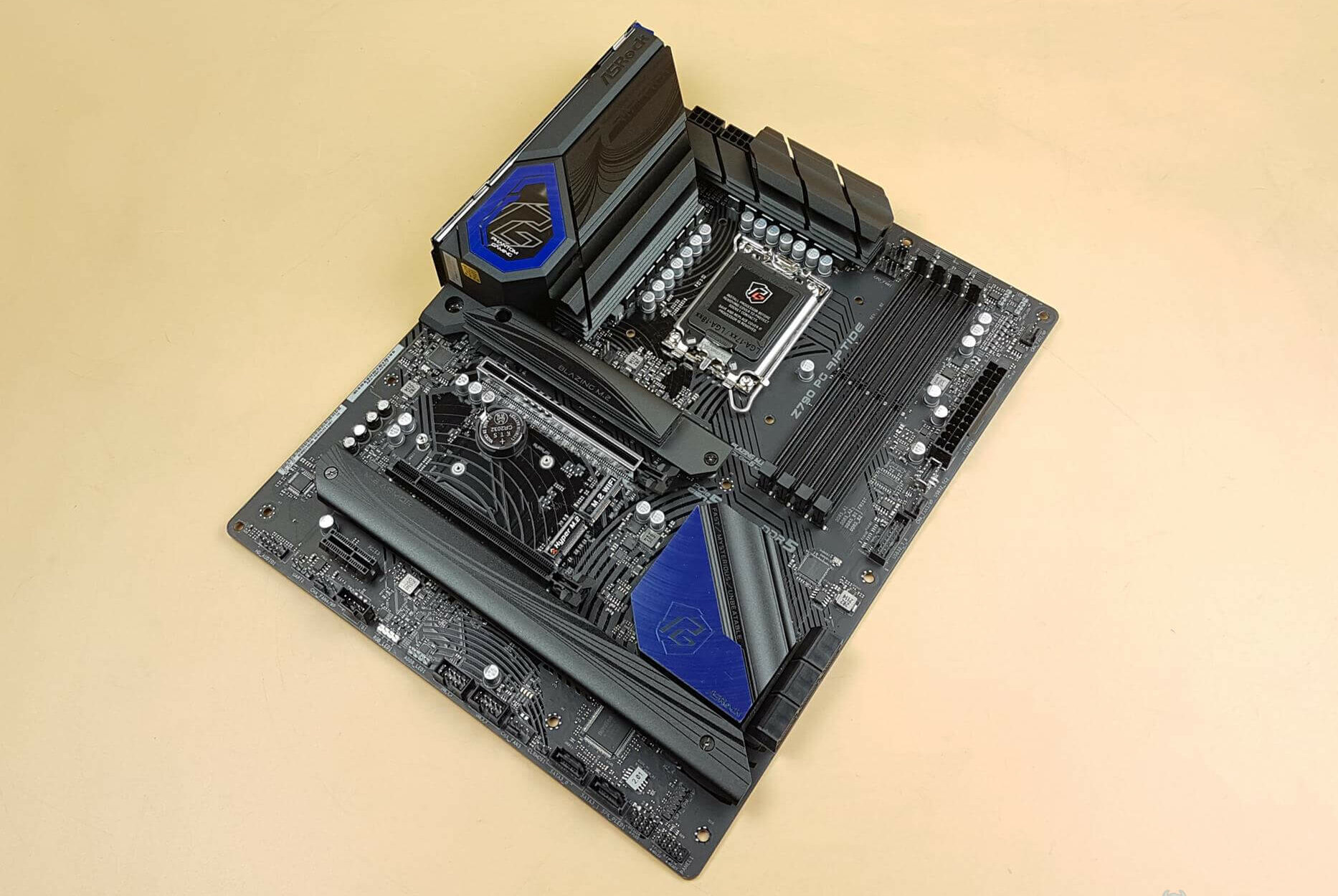
ATX is the most common form factor, measuring 12” x 9.6” or 305mm x 244mm.[3] It offers ample expansion options, typically six PCIe and four RAM slots. ATX motherboards suit most builds, from mid-range gaming PCs to high-end workstations. Moreover, they are also compatible with a wide range of cases, making them an excellent choice for those who want more flexibility in their build.
| Advantages | Disadvantages |
|---|---|
| Plenty of room for expansion with multiple expansion slots. | Large size, making it unsuitable for small form factor builds. |
| Standardized layout for easy compatibility with other components. | Requires a more significant case to accommodate the motherboard. |
| A large number of memory slots. | Higher power consumption due to the larger size and number of components. |
| Availability of a wide range of motherboards, making it easy to find compatible components. |
E-ATX
E-ATX is the largest form factor, measuring 12” x 13” or 305mm x 330mm or larger.[3] Being the largest form factor, it provides even more expansion options.[5] Typically, it offers up to eight PCIe slots and eight RAM slots. E-ATX motherboards are suitable for high-end builds, such as gaming rigs or workstations requiring much processing power. However, it may not fit in all cases, so it is essential to check compatibility before purchasing.
| Advantages | Disadvantages |
|---|---|
| Plenty of room for expansion with multiple expansion slots. | Large size, making it unsuitable for small form factor builds. |
| A large number of memory slots (as many as 8). | Requires a larger case to accommodate the motherboard. |
| A larger surface area allows for better heat dissipation. | Higher power consumption due to the larger size and number of components. |
| Extra space allows for multi-GPU setups. | Limited availability of some motherboards due to the larger size and less demand than the ATX form factor. |
Different Motherboard Form Factors Comparison
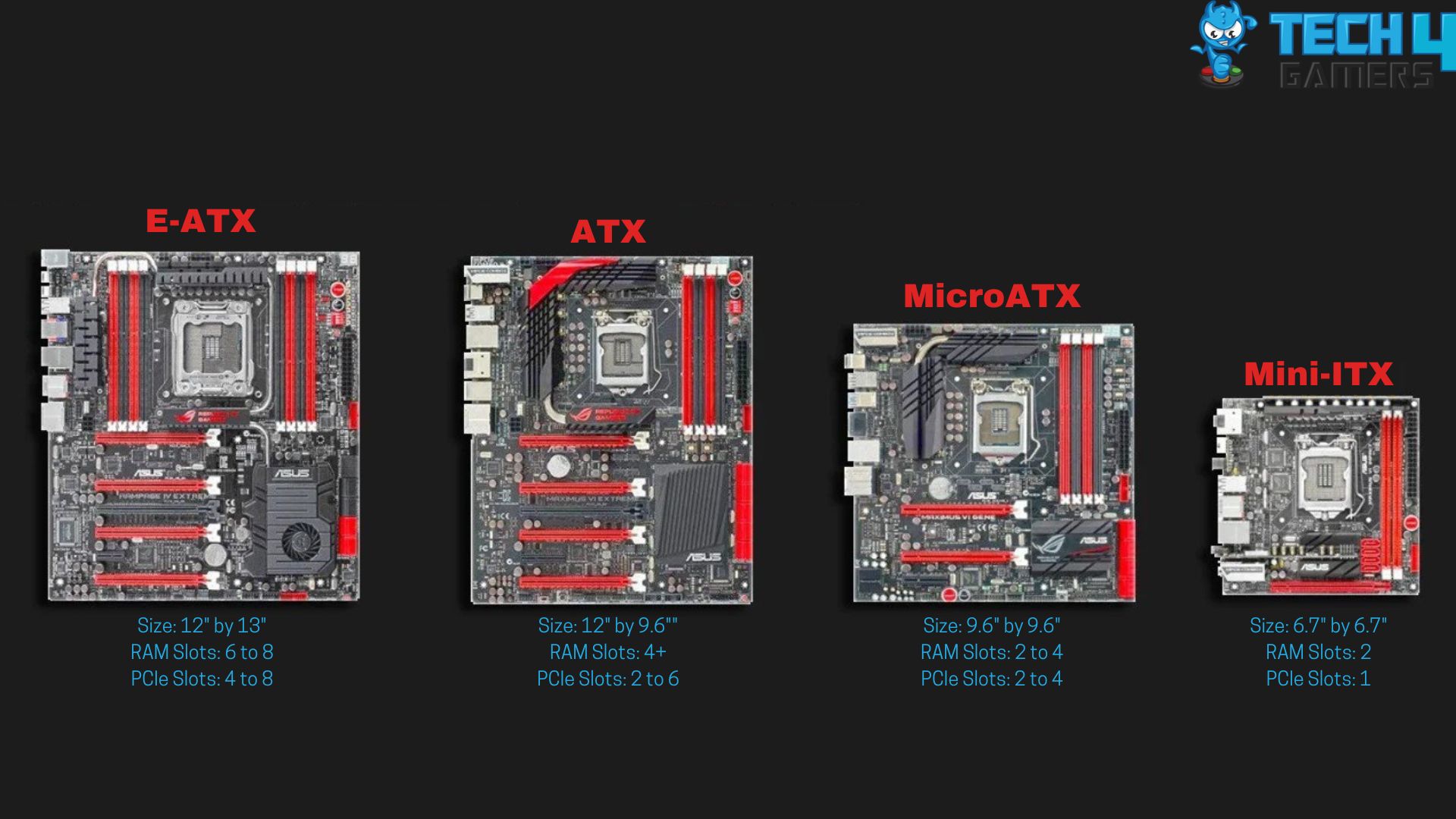
To help you compare the different motherboard form factors, we have created a comparison chart below:
| Form Factor | Size (mm) | RAM Slots | PCIe Slots | SATA Ports | Expansion Capabilities | Suitable For |
|---|---|---|---|---|---|---|
| Mini ITX | 6.7” x 6.7” | 1-2 | 1 | 2 | Limited | Small form factor builds with limited expansion capabilities |
| MicroATX | 9.6” x 9.6” | 2-4 | 2-4 | 4 | Moderate | Budget builds and compact gaming systems |
| ATX | 12” x 9.6” | 4+ | 2-6 | 6 | High | Mid-range to high-end gaming systems and workstations |
| E-ATX | 12” x 13” or larger | 6-8 | 4-8 | 6-8 | Very High | High-end gaming systems, workstations, and server builds |
Which Form Factor Should You Go For?
When selecting the correct motherboard form factor, your specific needs and requirements will play a significant role. Mini ITX will be ideal if you’re building a compact PC. However, MicroATX or ATX may be better for those seeking expansion options. On the other hand, if you’re planning to build a high-end gaming rig or workstation that demands a lot of processing power, then E-ATX is likely the way to go. Whatever your choice, it’s crucial to consider the motherboard’s compatibility with the case you want to use before making a final decision.
Conclusion
Summing up, the motherboard form factor is an essential factor to consider when building a PC. Generally, the four most common motherboard form factors are Mini ITX, MicroATX, ATX, and E-ATX. Choosing the correct form factor for your motherboard depends on your needs and requirements. It’s crucial to consider the size and compatibility of your chosen motherboard with the case you plan to use. By better understanding the different motherboard form factors available, you will be better equipped to make an informed decision and build a PC that meets your needs.
More Helpful Resources By Tech4Gamers:
- How Long Does A Motherboard Last + Improve Lifespan
- Motherboard RGB Header: What, Where & How
- What Is The Motherboard IO Shield & How To Install It?
- Can Motherboard Bottleneck Your PC? [CPU & GPU]
- Do Motherboards Have Integrated Graphics? [Answered]
- Can A Motherboard Bottleneck A GPU? [Explained]
- How to Build a Gaming PC In 2023
References:
- Adelphi University. CSC 170 – Introduction to Computers and Their Applications. Retrieved from https://home.adelphi.edu/~siegfried/cs170/170l4.pdf
- University Information Technology Services. What does form factor mean? Retrieved from https://kb.iu.edu/d/ahvq
- HCC Learning Web. Chapter 2: Form Factors, Power Supplies, and Working Inside a Computer. Retrieved from https://learning.hccs.edu/faculty/stanley.young/cmpt-1411/cmpt-1411_text-book-ch2
- Personal Computer Systems. Motherboard. Retrieved from http://jtmk.psis.edu.my/ccna/ite_en/course/module1/1.1.2.1/1.1.2.1.html
- University of Massachusetts Amherst. Building Your Rig 101: Motherboards. Retrieved from https://websites.umass.edu/Techbytes/2013/12/03/building-your-rig-101-motherboards-2/
FAQs
The most common motherboard form factor is ATX, widely used in gaming, workstation, and enthusiast builds.
It depends on the case, as E-ATX motherboards are usually larger than standard ATX motherboards. You should check the specifications of both the motherboard and the case to ensure compatibility.
Not necessarily. While Mini ITX motherboards have fewer expansion options than ATX motherboards, they can still support high-end CPUs, GPUs, and RAM and are suitable for many gaming and productivity tasks.
Thank you! Please share your positive feedback. 🔋
How could we improve this post? Please Help us. 😔
[Wiki Editor]
Ali Rashid Khan is an avid gamer, hardware enthusiast, photographer, and devoted litterateur with a period of experience spanning more than 14 years. Sporting a specialization with regards to the latest tech in flagship phones, gaming laptops, and top-of-the-line PCs, Ali is known for consistently presenting the most detailed objective perspective on all types of gaming products, ranging from the Best Motherboards, CPU Coolers, RAM kits, GPUs, and PSUs amongst numerous other peripherals. When he’s not busy writing, you’ll find Ali meddling with mechanical keyboards, indulging in vehicular racing, or professionally competing worldwide with fellow mind-sport athletes in Scrabble at an international level. Currently speaking, Ali has completed his A-Level GCEs with plans to go into either Allopathic Medicine or Business Studies, or who knows, perhaps a full-time dedicated technological journalist.
Get In Touch: alirashid@tech4gamers.com


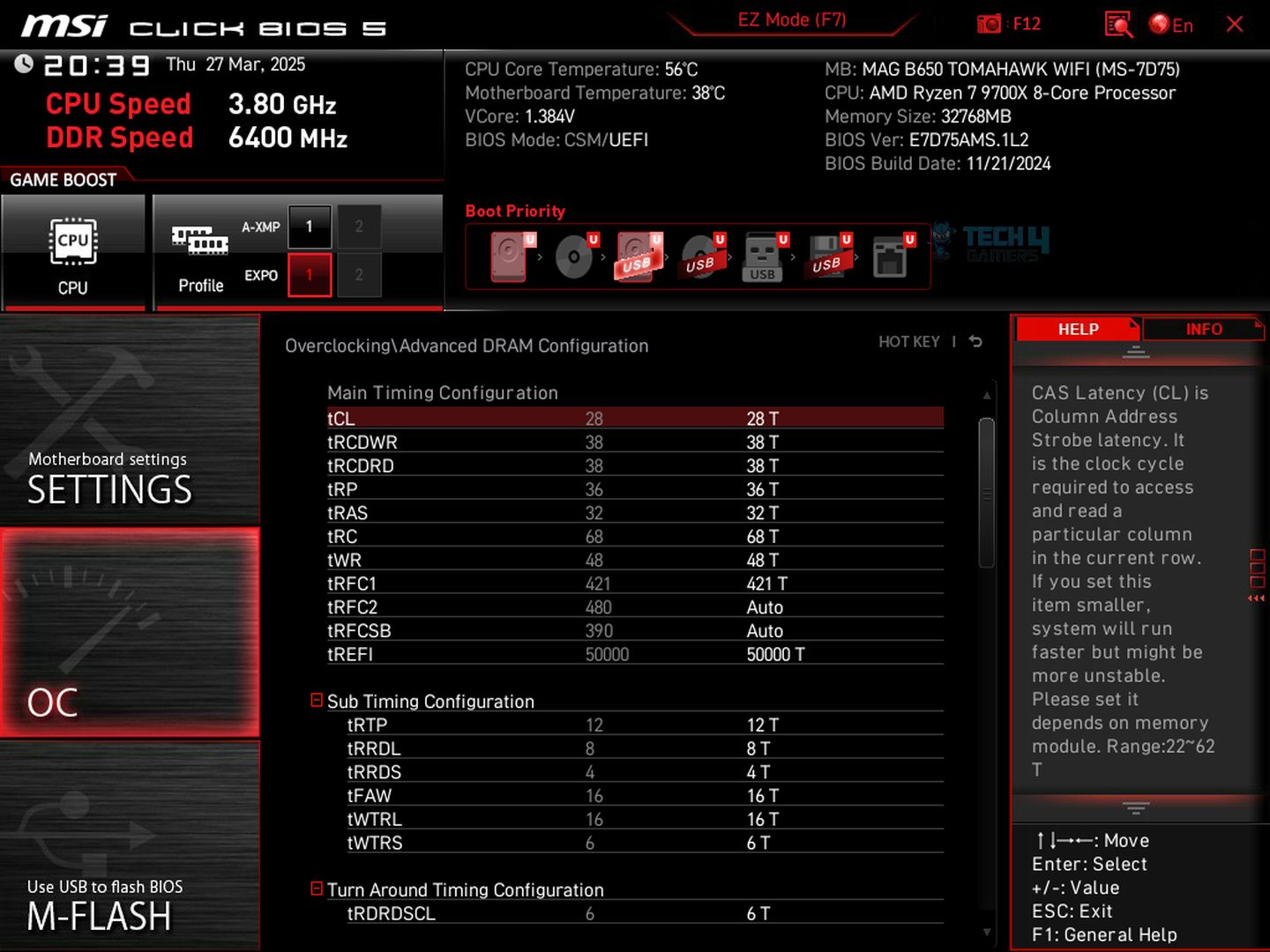

![AMD EXPO [Features & How You Can Enable It]](https://tech4gamers.com/wp-content/uploads/2024/08/CORSAIR-VENGEANCE-RGB-DDR5-RAM-32GB-2x16GB-6000MHz-CL30-AMD-EXPO-RGB-Lighting-3-218x150.jpg)
![Intel XMP [What, Why, & How] XMP Profile](https://tech4gamers.com/wp-content/uploads/2024/03/XMP-Profile-218x150.jpg)

Feedback By: